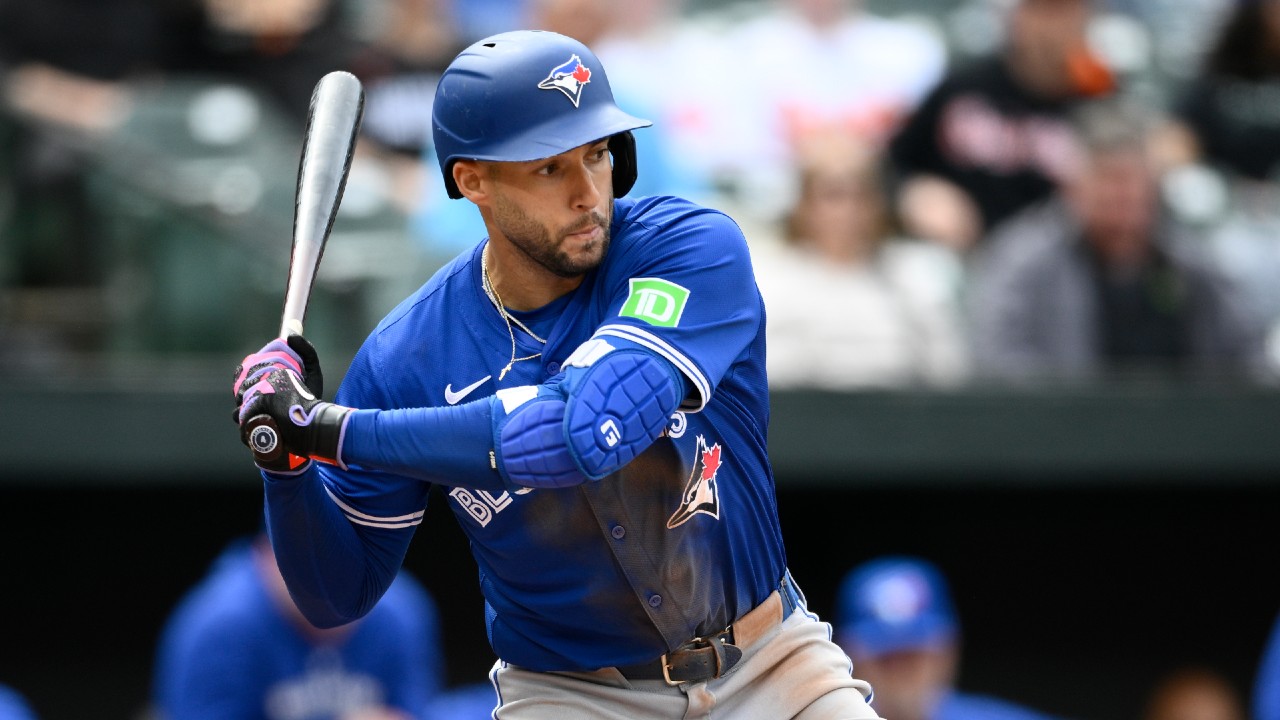The dominant narrative surrounding the Toronto Blue Jays for most of the last two seasons has revolved around their unimpressive offence driving disappointing results.
A lack of scoring hasn’t been the only thing leading to a 2023 that didn’t meet expectations and a lost 2024 campaign, but it’s the most salient for the majority of fans. Only two MLB teams scored more runs than Toronto between 2020 and 2022, but the Blue Jays fell to 13th last season and 24th in the first half of this season.
Those bottom-line results are uninspired and they were backed by a style of offence that many fans have found difficult to watch. When the Blue Jays offence was thriving a few years ago, it was doing so by leaning on prolific power. Between 2020 and 2022 only three teams hit more home runs, and just two crossed the plate more often.
More recently the team has done a good job of working counts to draw walks and putting the ball in play, but a lack of extra-base pop has held them back. From the beginning of the 2023 season to the 2024 All-Star break, Toronto produced the fourth-best walk-to-strikeout rate in the majors (0.43), but the club ranked 19th in home runs and 17th in total runs.
While it’s possible for top offensive teams to possess power and plate discipline, the Blue Jays have not had the right balance lately, causing a great deal of frustration over the team’s offensive philosophy.
That phrase is difficult to apply to a group of hitters who operate independently — but the results are dramatic enough that it’s not hard to see why it has become a public-sentiment pain point for the team. Things have changed a bit recently, though.
In the second half of 2024 the Blue Jays have had a more aggressive, powerful lineup that is not playing the style of ball their fanbase has reviled in recent seasons:
Split | BB% | Rank | K% | Rank | HR | Rank | ISO | Rank |
First half | 8.8 | 7th | 19.8 | 5th | 87 | 26th | .140 | 24th |
Second half | 7.9 | 17th | 21.2 | 10th | 49 | 10th | .183 | 7th |
The Blue Jays haven’t become an unstoppable power juggernaut, but a run like the 16-game homer streak that ended on Wednesday would’ve been a pipe dream a few months ago. This team is starting to do some damage, and it’s helped the Blue Jays go from ranking 24th in run-scoring prior to the All-Star Break to 11th after.
We are dealing with a relatively small sample of 39 games, but there are also structural changes here. Vladimir Guerrero Jr. rediscovering his power stroke is a significant one, as is George Springer hitting the ball with more authority (eight home runs and a .207 ISO). The new-look lineup also regularly features guys like Joey Loperfido and Addison Barger, who prioritize extra-base power even if it means taking some strikeouts.
It would be easy to perceive this as a small-sample blip, but there’s reason to believe the Blue Jays could be veering towards more of a power focus. It’s unclear what role the likes of Loperfido and Barger have to play in 2025 and beyond, but they could be factors with only Will Wagner figuring to be a plate discipline-oriented counterbalance among Toronto’s emerging cohort. Even Leo Jiménez — whose offence has generally been rooted in on-base ability as a pro — is currently showing Toronto a surprisingly free-swinging approach and generating more power than expected.
While it’s unclear how much Bo Bichette will play for the team down the stretch — or beyond 2024 — he also fits the mold of a player whose extra-base ability supersedes his plate discipline.
Perhaps most importantly, the team’s top four hitting prospects according to MLB Pipeline are power-first players with some swing-and-miss in their game.
1. Orelvis Martinez: Produced 58 home runs and 266 Ks between 2022 and 2023. ISO of .251 and a 25.5-per-cent K rate at the triple-A level. He is currently serving an 80-game suspension for a positive drug test.
2. Arjun Nimmala: Has posted a .245 ISO with 15 home runs in 74 games at single-A in his first pro season with a 32.0-per-cent K rate.
3. Jonatan Clase: Had a 32.6-per-cent strikeout rate in his MLB cameo this year and every FanGraphs projection system has him above 30 per cent in the majors for 2024. Has a .190 ISO at triple-A this season while striking out 25.9 per cent of the time.
4. Charles McAdoo: Has a .214 ISO and 25.8-per-cent K rate in his first taste of double-A between the Pittsburgh Pirates and Blue Jays affiliates.
The high strikeout rates here are not meant to be a positive from an on-field value standpoint. If anything, they make each of these players a riskier bet to have a meaningful impact in the major leagues.
What they do indicate, in conjunction with the power numbers, is that there is a stylistic shift at the top of Toronto’s farm system. The Blue Jays are looking like a team that may be able to develop some power internally, which is something they haven’t done with any success since Guerrero and Bichette debuted in 2019.
There’s no one way to score runs at the major-league level, but hitting for power is the most direct path to getting there — particularly in the playoffs where the Blue Jays have floundered in recent years.
Toronto has not found a definitive solution for the punchlessness that has hounded its lineup lately, but the combination of Guerrero’s resurgence and a slightly rejuvenated prospect pool means that the style of offence Blue Jays fans have been so frustrated by in the last two years may be on the way out.




